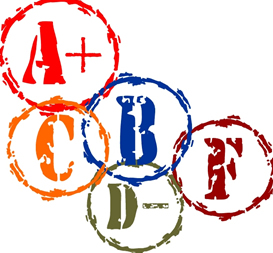Dr. Verena Theile, Assistant Professor

Department of English |
| Grading Standards |
All assignment will be graded on a standard scale from A to F, with A being greater than 90% and F lower than 60%. All grades are determined by applying standards of language, tone, coherence, style, logic, organization, and mechanics. The A paper is a superior paper—it surpasses other papers because it is original, logical, and eloquent. In general, this type of paper stands out because the writer has chosen an interesting topic—one about which s/he is obviously enthusiastic. The approach to the paper topic is unique, and the analysis is insightful. This paper follows a clear and systematic organizational pattern and is devoid of any major mechanical mistakes and logical fallacies. There is a clear and exceptional command of language, stylistic devices, and academic conventions. The A paper succeeds because it demonstrates a superior understanding of the literature under discussion and a clear awareness of the expectations of the writer’s audience. It does what it sets out to do and it does it competently, confidently, and convincingly. top The B paper is a very good paper—but it is not superior to most others. It does, however, achieve almost all of its major goals. It has a clear introduction and a good thesis statement, a well-developed argument and a logical layout, and the conclusion follows naturally. Under closer scrutiny, the paper falls short of succeeding in one or perhaps even two of its major purposes. It might have a great thesis and a good exposition and a clear organization, but the argument struggles or strays at times; conversely, it might have an excellent argument but a slightly shaky organization with too little textual support. Mechanically, this paper should be comparable to the A paper: the writer must demonstrate an exceptional command of language, stylistic devices, and academic conventions even without achieving flawlessness. top The C paper is a good paper, which fulfills the assignment, but fails to impress the reader. It does what has been asked but refuses to go beyond that. It lacks passion and conviction. The writer falls short of getting the reader involved in the topic and making his/her audience care; more importantly, it falls short of making his/her audience believe that the writer cares. While the argument might be sound, adequate support is slim and occasionally absent altogether. The paper might be organized logically and strategically, but its use of language disappoints: there is a lack of sentence variety, smooth transitions, and appropriate word choices. Structurally, the paper is predictable, ideas do not surprise, and paragraphs fail to delve below the surface; the paper’s narrative tone might need occasional adjustments. top In the D paper, multiple things have gone wrong at the same time. The paper might still be fulfilling the assignment, but both organization and mechanics suffer shortcomings. Perhaps, the thesis fails to convince, or to stir the reader’s interest. The support might be inadequate or insufficient—the quotes from the text are not interpreted sufficiently, and sources are not integrated convincingly. The narrative fails to meet the audience’s expectations, and the style is inappropriate to a formal, academic writing exercise. Typically, this type of paper suffers from serious mechanical errors, which distract the reader from its argument, and the content remains too far removed from the reader to make him or her care about the topic. Vagueness prevails, obscuring both argument and organization. top The F paper receives a failing grade because it falls short of fulfilling the assignment—a failure to meet the required page length is this paper’s most immediately damaging error. An F is applied automatically to papers that fail to meet the required minimum page requirement or exceed the maximum page limit. Be sure to read closely the guidelines to the individual assignments. There are other problems, though, that might lead to an F. Often F papers have no thesis statement or one so vague that it is impossible to identify, let alone follow, the argument. There is little to no audience awareness; language and style fail to reflect an understanding of academic standards. Word choice and sentence structure are simplistic, and generalizations prevail. F papers achieve little beyond confusing the reader by the randomness of their claims. Throughout, support is insufficient, and the argument remains ill-defined until the very end. Structurally, this paper is superficial; mechanically it is sloppy. top An X paper represents incomplete or misdirected efforts. This grade is given when the work demonstrates clear effort and engagement by the students, but would benefit from a more focused revising of the paper topic or theme. X papers are given on merit basis only and cannot be negotiated. top |
Last updated January 2009 |